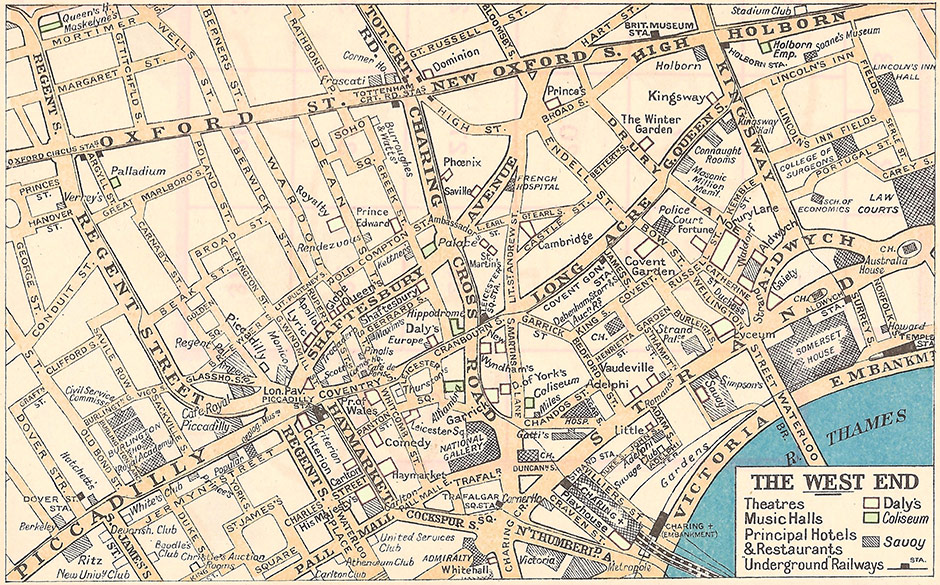Electric Cinema Theatre
Address: 6 Ingestre Place
Year opened: 1908
Year closed: 1916
Link to venue
Theme 1:
‘A thickly populated and overcrowded neighbourhood’: early cinemas in Soho
National Bioscope
Address: 20 Frith Street
Year opened: 1910
Year closed: 1914
Link to venue
Theme 1:
‘A thickly populated and overcrowded neighbourhood’: early cinemas in Soho
5-6 Marshall Street
Link to venue
Theme 1:
‘A thickly populated and overcrowded neighbourhood’: early cinemas in Soho
Pathé Building
Address: 103-109 Wardour Street
Link to venue
Theme 1:
‘A thickly populated and overcrowded neighbourhood’: early cinemas in Soho
West End Cinema Theatre
Address: 3-4 Coventry Street
Year opened: 1913
Year closed: 1982
Link to venue
Theme 2:
Don’t panic! West End cinemas in World War I
Piccadilly Circus Cinematograph Theatre
Address: 43-44 Great Windmill Street, Piccadilly Circus
Year opened: 1910
Year closed: 1990
Link to venue
Theme 2:
Don’t panic! West End cinemas in World War I
New Gallery Kinema
Address: 121/123 Regent Street
Year opened: 1913
Year closed: 1953
Link to venue
Theme 2:
Don’t panic! West End cinemas in World War I
Stoll Picture Theatre
Address: Kingsway
Year opened: 1917
Year closed: 1940
Link to venue
Theme 3:
Bright lights: West End cinema-going in the ‘jazz age’
Tivoli
Address: 65-70 Strand
Year opened: 1923
Year closed: 1956
Link to venue
Theme 3:
Bright lights: West End cinema-going in the ‘jazz age’
Empire Theatre
Address: Leicester Square
Year opened: 1928
Year closed: 1961
Link to venue
Theme 3:
Bright lights: West End cinema-going in the ‘jazz age’
Astoria Theatre
Address: 149-151 Charing Cross Road
Year opened: 1927
Year closed: 1976
Link to venue
Theme 3:
Bright lights: West End cinema-going in the ‘jazz age’
Embassy Theatre
Address: 210-211 High Holborn
Year opened: 1911
Year closed: 1924
Link to venue
Theme 4:
‘Little theatres’ and ‘unusual’ films: specialist cinemas in the West End
Polytechnic Theatre
Address: 307 Regent Street
Year opened: 1918
Year closed: 1980
Link to venue
Theme 4:
‘Little theatres’ and ‘unusual’ films: specialist cinemas in the West End
Avenue Pavilion
Address: 101 Shaftesbury Avenue
Year opened: 1912
Year closed: 1940
Link to venue
Theme 4:
‘Little theatres’ and ‘unusual’ films: specialist cinemas in the West End
Palais de Luxe
Address: 17-19 Great Windmill Street
Year opened: 1910
Year closed: 1931
Link to venue
Theme 4:
‘Little theatres’ and ‘unusual’ films: specialist cinemas in the West End
Hale's Tours
Address: 165 Oxford Street
Year opened: 1906
Year closed: 1910
Link to venue
Theme 1:
‘A thickly populated and overcrowded neighbourhood’: early cinemas in Soho



